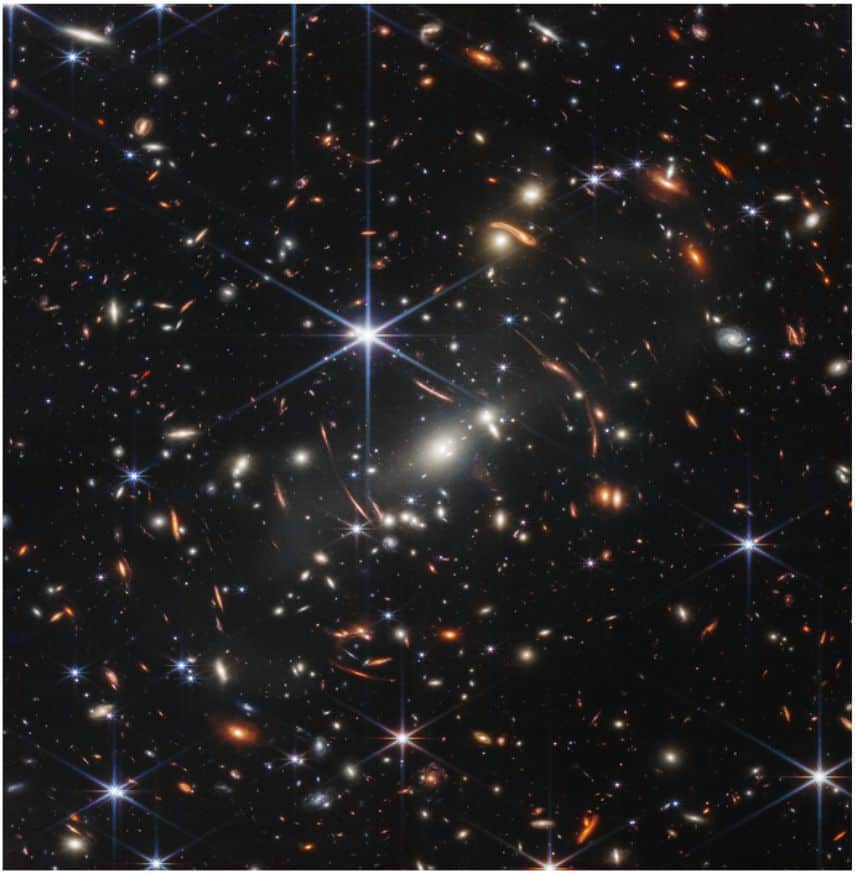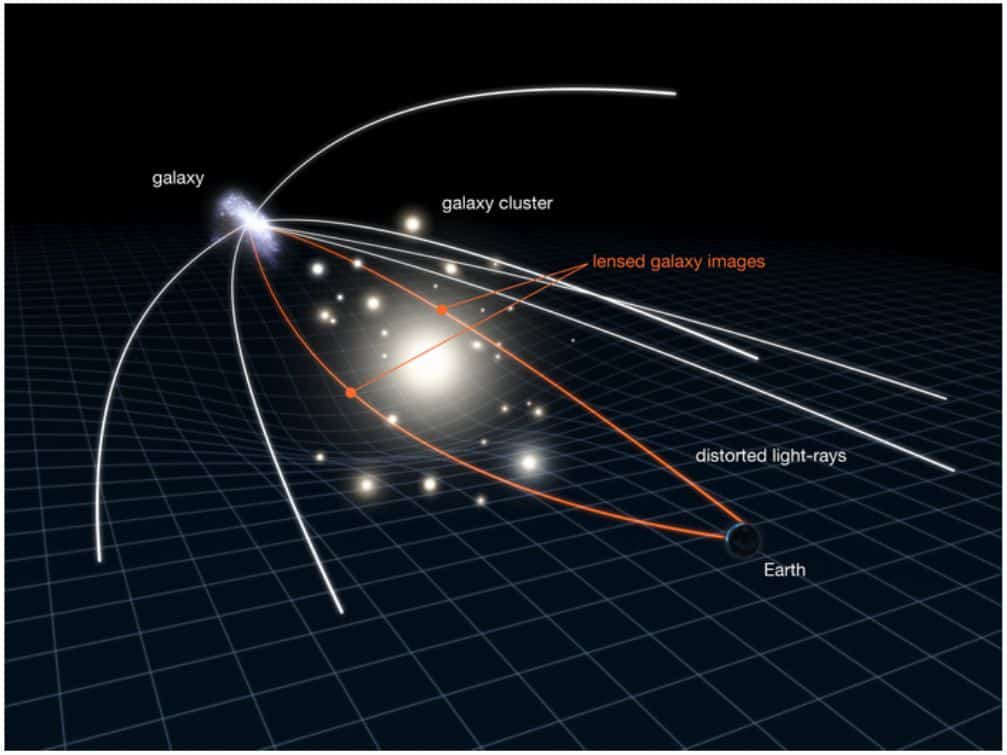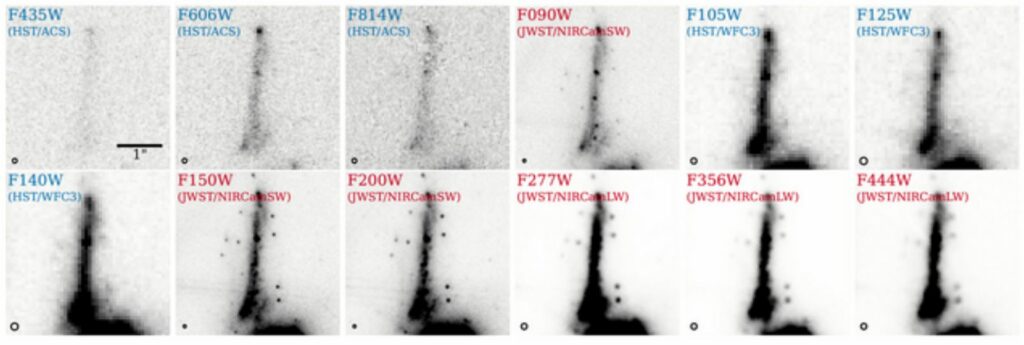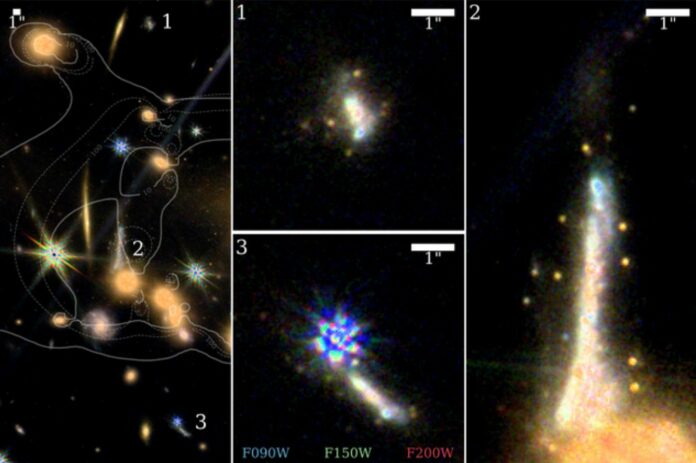Webb’s First Deep Field Image Reveals A Galaxy Sparkling With The Universe’s Oldest Star Clusters
Researchers from the Canadian NIRISS Unbiased Cluster Survey (CANUCS) team used the James Webb Space Telescope (JWST) to find the most faraway globular clusters ever found. There may be some of the first and oldest stars in the universe in these clusters of millions of stars.
The Astrophysical Journal Letters has just published an early study of Webb’s First Deep Field image, which shows some of the cosmos’ earliest galaxies.

According to Lamiya Mowla, co-lead author of the study and Dunlap Fellow at the Dunlap Institute for Astronomy & Astrophysics at the University of Toronto, “JWST was built to find the first stars and the first galaxies and to help us understand the origins of complexity in the universe, such as the chemical elements and the building blocks of life.”
This finding in Webb’s First Deep Field confirms “the incredible power of JWST” by giving an in-depth look at the beginning stages of star formation.

In Webb’s First Deep Field image, which has a lot of detail, scientists focused on what they call “the Sparkler galaxy.” It is nine billion light years away. The researchers nicknamed the compact objects surrounding this galaxy “sparkles” because they resemble tiny yellow-red spots. According to the research team, these sparkles might either be young clusters of stars that are actively developing, which would have been created three billion years after the Big Bang, at the height of star formation, or old globular clusters. Globular clusters are old groups of stars from when a galaxy was young. They hold clues about how it formed and grew in its early years.

The researchers looked at 12 of these small objects and found that five of them are both globular clusters and some of the oldest ones known.
The discovery of ancient globular clusters surrounding far-off galaxies in the first JWST images was “an incredible moment, one that wasn’t possible with previous Hubble Space Telescope imaging,” explains Kartheik G. Iyer, co-lead author of the study and Dunlap Fellow at the Dunlap Institute for Astronomy & Astrophysics at the University of Toronto.
“Since we could observe the sparkles across a range of wavelengths, we could model them and better understand their physical properties, like how old they are and how many stars they contain.”

The team hopes “the knowledge that globular clusters can be observed from such great distances with JWST will spur further science and searches for similar objects.”
There are over 150 globular clusters in the Milky Way galaxy, and it is unclear exactly how and when these massive collections of stars formed. Although globular clusters can be quite old, astronomers have a very difficult time determining their ages. It has never been done before, and JWST alone makes it possible, to age-date the initial stars in far-off galaxies using globular clusters that are incredibly isolated.
“These newly identified clusters were formed close to the first time it was even possible to form stars,” adds Mowla. “Because the Sparkler galaxy is much farther away than our own Milky Way, it is easier to determine the ages of its globular clusters. We are observing the Sparkler as it was nine billion years ago, when the universe was only four-and-a-half billion years old, looking at something that happened a long time ago. Think of it as guessing a person’s age based on their appearance — it’s easy to tell the difference between a 5- and 10-year-old, but hard to tell the difference between a 50- and 55-year-old.”
Up until this point, the Hubble Space Telescope was unable to observe the Sparkler galaxy’s surrounding compact objects (HST). This changed with JWST’s improved sensitivity and resolution, which allowed Webb’s First Deep Field image to see the faint specks around the galaxy for the first time. The Sparkler galaxy is unique because the SMACS 0723 galaxy cluster in the foreground distorts what is behind it, making it look like a giant magnifying glass and making the Sparkler galaxy 100 times bigger. In addition, the Sparkler is visible in three different views thanks to gravitational lensing, which enables astronomers to examine the galaxy in more detail.

According to Chris Willott, CANUCS team leader from the Herzberg Astronomy and Astrophysics Research Centre of the National Research Council, “Our study of the Sparkler highlights the tremendous power in combining the unique capabilities of JWST with the natural magnification afforded by gravitational lensing.” The team is anticipating more discoveries when JWST focuses on the CANUCS galaxy clusters starting next month.
The scientists combined old HST data with fresh information from the Near-Infrared Camera (NIRCam) on JWST. In order to see beyond what the human eye and even HST can see, NIRCam detects faint objects by employing longer and redder wavelengths. Observing small objects was made possible by the great resolution of JWST as well as magnifications brought on by the galaxy cluster’s lensing.

The Near-Infrared Imager and Slitless Spectrograph (NIRISS) instrument on the JWST confirmed that the objects are old globular clusters. The researchers did not see any oxygen emission lines, which are emissions with measurable spectra that are given off by young clusters that are still making stars. NIRISS also assisted in deciphering the geometry of the Sparkler’s triple-lensed images.
“JWST’s made-in-Canada NIRISS instrument was vital in helping us understand how the three images of the Sparkler and its globular clusters are connected,” adds Marcin Sawicki, Canada Research Chair in Astronomy, professor at Saint Mary’s University and study co-author. “Seeing several of the Sparkler’s globular clusters imaged three times made it clear that they are orbiting around the Sparkler galaxy rather than being simply in front of it by chance.”
Beginning in October 2022, JWST will study the CANUCS fields. Using JWST data, the researchers will examine five enormous clusters of galaxies, around which they anticipate discovering additional similar systems. Future research will model the galaxy cluster to comprehend the lensing effect and do more thorough investigations to interpret the histories of star formation.
Institutions from the US and Europe as well as York University are working together on this project. The Canadian Space Agency and the Natural Sciences and Engineering Research Council of Canada provided funding for the study.
Source: 10.3847/2041-8213/ac90ca
Image Credit: NASA, ESA, CSA, STSCI
You were reading: New Discovery Depicts Some Of The Universe’s Earliest Galaxies Ever Discovered
